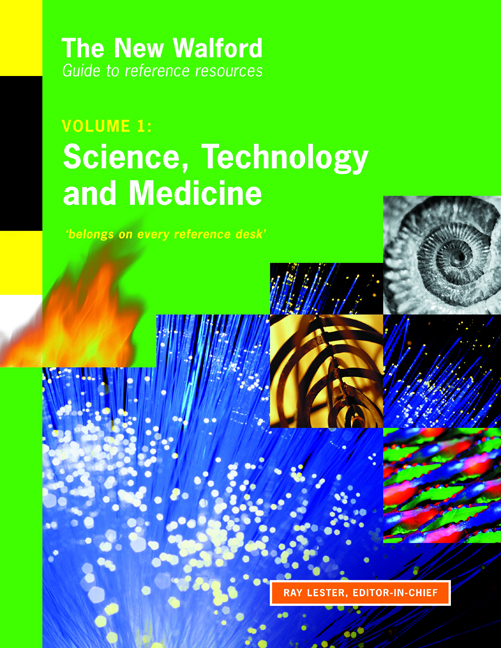Book contents
- Frontmatter
- Dedication
- Contents
- Preface
- Quick-start guide
- Editor and subject specialists
- 50 good websites to try first
- Introduction
- SCIENCE, TECHNOLOGY & MEDICINE: GENERIC RESOURCES
- SCIENCE
- MEDICINE
- TECHNOLOGY
- Technology
- Natural Resources & Energy
- Engineering
- Information & Communication Technology
- Tools for Information Professionals
- Indexes
- Topic Index
- Title/Author Index
Engineering
from TECHNOLOGY
Published online by Cambridge University Press: 08 June 2018
- Frontmatter
- Dedication
- Contents
- Preface
- Quick-start guide
- Editor and subject specialists
- 50 good websites to try first
- Introduction
- SCIENCE, TECHNOLOGY & MEDICINE: GENERIC RESOURCES
- SCIENCE
- MEDICINE
- TECHNOLOGY
- Technology
- Natural Resources & Energy
- Engineering
- Information & Communication Technology
- Tools for Information Professionals
- Indexes
- Topic Index
- Title/Author Index
Summary
Introductions to the subject
Engineers and their profession
J.D. Kemper and B.R. Sanders 5th edn, Oxford University Press, 2001, 346pp. $39.95. ISBN 0195120574.
Highly rewarding introduction based on the US environment. Very useful chapter The branches of engineering with quite detailed descriptions, as well as much other good background information. An ideal place to start for someone relatively unfamiliar with engineering's theories, practices, problems and prospects.
Introduction to engineering ethics
R. Schinzinger and M.W. Martin McGraw-Hill, 1999, 272pp. $42.50. ISBN 0072339594.
In line with the guidelines of the US ACCREDITATION BOARD FOR ENGINEERING AND TECHNOLOGY, provides an overview suitable as background within engineering courses. Six chapters: Professionalism; Moral reasoning and ethical theories; Engineering as social experimentation; Commitment to safety; Workplace responsibilities and rights; Global issues.
Dictionaries, thesauri, classifications
Dictionary of engineering
2nd edn, McGraw-Hill, 2003, 642pp. $19.95. ISBN 0071410503.
Derived from the MCGRAW-HILL DICTIONARY OF SCIENTIFIC AND TECHNICAL TERMS.
The dictionary of engineering acronyms and abbreviations
U. Erb and H. Keller 2nd edn, Neal-Schuman, 1994, 878pp. $149.95. ISBN 1555701299.
65,000 terms: more than twice the first edition.
Elsevier's dictionary of engineering
M. Bignami Elsevier, 2004, 1300pp. £196.50. ISBN 0444514678.
In English/American, German, French, Italian, Spanish and Portuguese/Brazilian. Contains terms for 14 main subject areas, described as: Architectural engineering and buildings; Civil engineering; Engineering; Geology; Geotechnical engineering; Hydraulics; Hydrogeology; Hydrology; Mechanical Engineering; Mechanics; Mining Engineering; Petroleum engineering; Science and technics; Surveying.
Laws, standards, codes
Deutsches Institut für Normung
See entry no. 32
Official & quasi-official bodies
Accreditation Board for Engineering and Technology [USA]
www.abet.org
‘In the United States, accreditation is used to assure quality in educational institutions and programs. Accreditation is a voluntary, non-governmental process of peer review. It requires an educational institution or program to meet certain, defined standards or criteria. Accreditation is sometimes confused with certification. In general, institutions and programs are accredited, and individuals are certified.’
Four disciplinary areas are covered by ABET; Engineering; Engineering technology; Computing (including Information systems); Applied science (Health physics; Industrial hygiene; Industrial management; Safety; Surveying).
- Type
- Chapter
- Information
- The New Walford Guide to Reference ResourcesVolume 1: Science, Technology and Medicine, pp. 545 - 671Publisher: FacetPrint publication year: 2004

